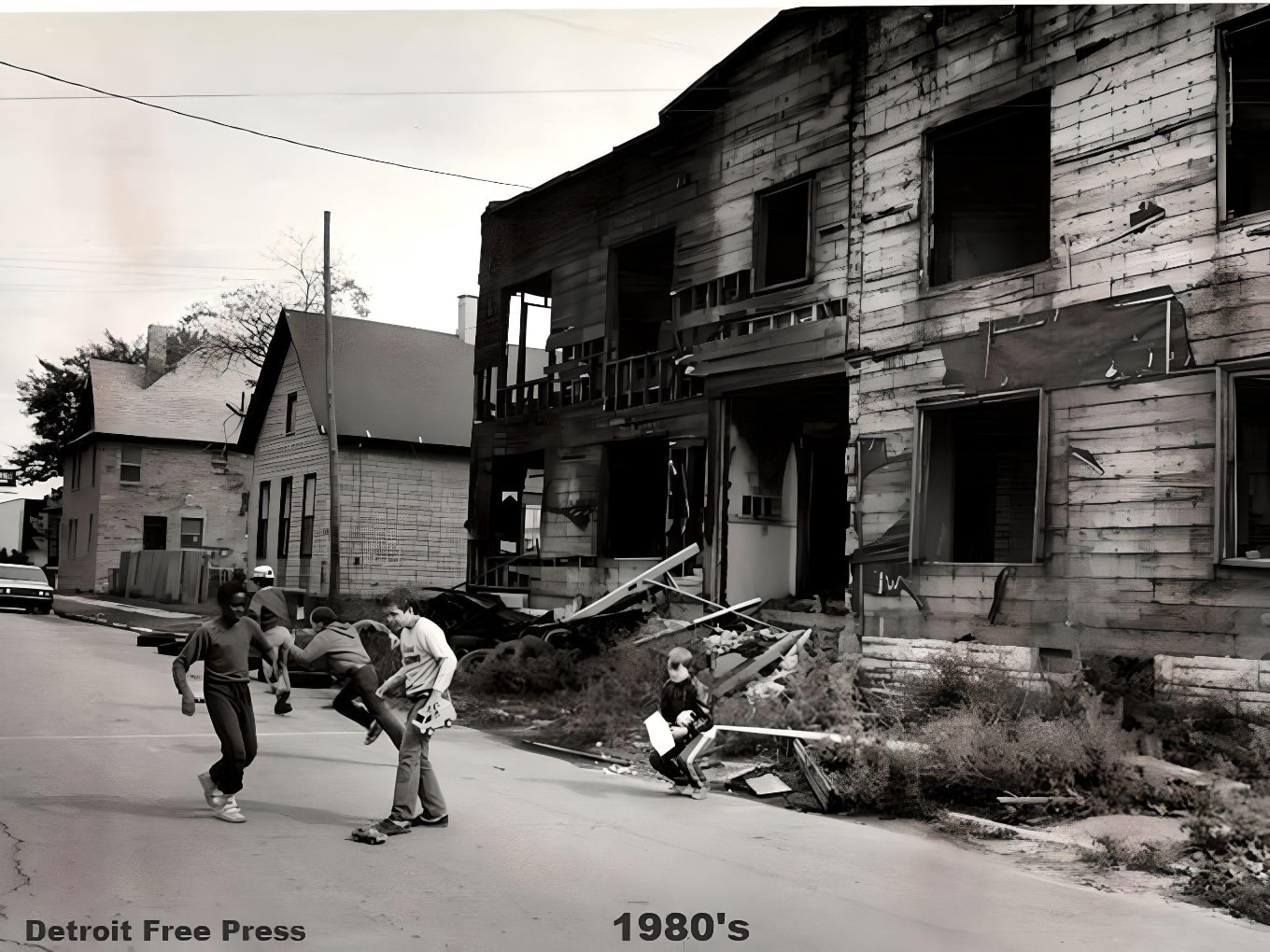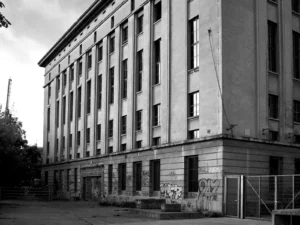Did someone say Techno? A brief history of the legend music genre
Techno was made in Detroit in the early 1980s when the city was falling apart. It is probably the most studied genre of electronic music. Why? Because its listeners have a certain awareness since this music genre has its own philosophy. And this is what interests specialists the most. But don’t confuse Detroit’s Techno with Chicago house, which was created around the same time four hours away from Detroit but did not have it. It was born as ordinary music for dance floors, replacing the already boring disco. Techno, on the other hand, was positioned as the music of the future from day one.
So, what is Techno?
Techno is electronic dance music that originated in the USA in the 80s and, already in the 90s, deservedly gained world popularity. With its chilly synth melodies and lively machine beats, Techno became a fascination for middle-class African-American youth in Detroit, Michigan, and was considered European electronic dance music. Techno music took technology as its basis and turned it into its highlight. As a style, Techno emerged as a result of combining styles popular at the time, such as Chicago house, funk, electro, and jazz, with electronic music.
Though, this sounds boring. So, let’s put it this way: Techno is a philosophy and a lifestyle. Once you understand its greatness, there’s no coming back.
Born in the ruins of Detroit
To understand the nature of the genre, you need to know the history of Detroit’s self-destruction, as the style itself is inextricably linked to the place.
Since Henry Ford founded the world’s first automobile factory here at the turn of the nineteenth and twentieth centuries, the city has become one of the centers of America. Unfortunately, Detroit reached its peak in the fifties, and the city quickly began to crumble under the weight of its greatness. As it became completely built up, the light-skinned part of Detroit started to move to inexpensive suburbs: away from factories, skyscrapers, noise, gangsters, and high rents. This will then be called «the white flight.»
Techno creators claim that in no other city in America would it have been possible to create Techno. 
A city previously thriving in the engineering sector and home to a vibrant jazz scene, Detroit in the late 1970s is a sad sight. So many people’s hopes and goals have been dashed by the biggest economic downturn in modern history. As a result, many couples and families have retreated into their cocoons in an effort to survive. The city’s young people wanted to get away, and the nightlife could give them that chance. Because of this change, there were a lot of empty buildings in the city center, which were turned into techno clubs. Even though there was still a division between white and black in the city, the music brought all black people together into a full-fledged techno culture.
Dark and forlorn, the city’s core is littered with the charred remains of former buildings, the empty shells of historic homes and theaters, and the wrappers from bags of chips. In the decades after the violent riot of 1967, the black ghetto has steadily become populated by prostitutes and crack dealers while the city’s wealthy population has fled to safer neighborhoods on the outskirts. Here, Derrick May, Kevin Saunderson, and Juan Atkins, three friends from Belleville’s public schools, are planning to change the face of music forever. Later, they will become known as The Belleville Three.
They were driving across the city at night, turning on the local radio to hear an unexpected mix from Electrifying Mojo, which included tracks by Kraftwerk, Prince, Parliament-Funkadelic, The B-52s, and many more uncharted, mind-boggling sound anomalies. Many techno pioneers have said that Electrifying Mojo was the driving force behind the genre’s development. He didn’t care about genre boundaries and combined everything, using the basic rule of “hot or not”: if the song is good, it gets played on the radio, and if it’s not, nothing can make him play it.
Along with Rick Davis, Atkins, who started making music on the first cheap synthesizers, formed the extremely influential electro band Cybotron in his teens. The 19-year-old Juan’s mind was a pulsating kaleidoscope of these modern patterns, which provided the essential foundation for Techno. So, later, in 1985, the song “No Ufo’s” was out, founding the Metroplex label and fulfilling Juan’s dream by incorporating preexisting musical traditions, the mechanical urbanism of the city, the energy of a dying civilization, and utopian ideas of the future. It was the seed from which an idea grew fast, both in time and in the imaginations of those involved.
The foundations for Techno were laid in the local club “Cheeks” and subsequently at the Music Institute. Atkins, May, Saunderson, and others’ efforts distanced Techno from the house disco aesthetic and infused it with the ice synth melodies and rapid machine rhythms of the Roland 808, 909, and 303 drum machines.
Techno and the European rave scene
Techno music’s dreamy beauty was transformed into forceful riffs and deep textures by European producers when the sound of Detroit became the backbone of the European rave scene. Strange things began to occur in the late 1980s and early 1990s. Techno and house, which failed to succeed in the US, became popular in Europe, especially in the UK.
Around 1990, raves began to appear on the outskirts of London. Most of the organizers of these large, illegal parties made their money by evading British licensing laws. Sometimes the location was kept secret until the night of the event, and complex schemes were developed to obtain information about the meeting place. As a result, hundreds of ravers met together at the same time, which made it difficult to stop such events.
Then, rave music took over the media space for a short time in Britain. Simultaneously, a new generation of techno pioneers in Europe and the United States—including Joey Beltram and Underground Resistance—were moving their music in a darker, harder direction, resulting in hardcore.
Techno was on the cutting edge of popular music in the West at the end of the 20th century. It had a wide range of sub-styles, from pop to the darkest parts of the underground. Currently, there are many subgenres of Techno and different kinds of projects that try out different sounds and textures.
The genre has shifted and changed all the way from Detroit to Berlin.
Now, Berlin is known for its Techno parties and Berghain club.
It was founded in 2004, and since then, it has been known as the “world capital of techno” and is one of the most famous clubs in the world. The club is part of the city’s techno club history, which began in the early 1990s in basements and empty factory buildings. After the Berlin Wall came down, old buildings in the area that used to be East Berlin became popular places to party to the wild and sweaty Techno music of the time.
Even though Berghain is the most famous club in the world, for most people, it’s a mystery. A lot of people never get to go in, and you can’t film or take pictures there. Cause “What happens in Berghain stays in Berghain.”

In 2019, a legendary Techno club, K41, from the founders of Berghain was opened in Kiyv. During the COVID-19 pandemic, which caused a lot of lockdowns, the popularity and speedy growth of Kyiv’s scene really took off. At that time, a lot of people started coming to Kyiv because the lockdown was less strict and shorter. While clubs all over Europe were closed, K41 was lucky to be able to be open in the summer of 2020. Most of the people at the party were from Germany as every day, there were three flights from Berlin to Kyiv and seven on Fridays. The K41 scene was alive. It had more energy, potential, and emotion than ever before.
Are you wondering what has happened after Techno’s huge success?
Well, some people can claim that modern Techno became a purely commercial and popular event with its own business laws, media heroes, and pop superstars. That it is mutating into brainless sub-styles designed to serve the big festival-amphetamine frenzy, which also acquires its stable and wide audience.
But, come on, the story is not that sad.
Despite the absence of true Techno (as some claim) and house in mass production, today, there is a lively and original underground environment, spread with its unique manifestations over most of the globe. Thanks to sincere people who make music for the sake of music, it breathes and develops, mixing the unique traditions of its local culture with the rhythmic frameworks of modern electronics, regularly giving birth to new trends and erasing the boundaries of established styles.
Moreover, even though some die-hard fans claim that true Techno is dead, its rise in popularity over the last few years is hard to deny, especially since tech-house artists are getting Grammy nominations.
These days artists like Maceo Plex, Ben Klock, Sven Väth, Marcel Dettmann, and many others are immensely impacting the direction of techno.
Sure, Techno is still a success. It doesn’t have to be brand-new or popular to stay significant. Great music can come at any time. There are a lot of different albums that came out between 1992 and 1996, but there’s also a lot of new stuff coming out with just as much talent.
So much more already and will be created in the future about Techno that it would be impossible to give it justice in a single article.
To really understand techno, you have to live it. So get out there, find your favorite artists and songs, support them with all your heart, and live that techno life.
